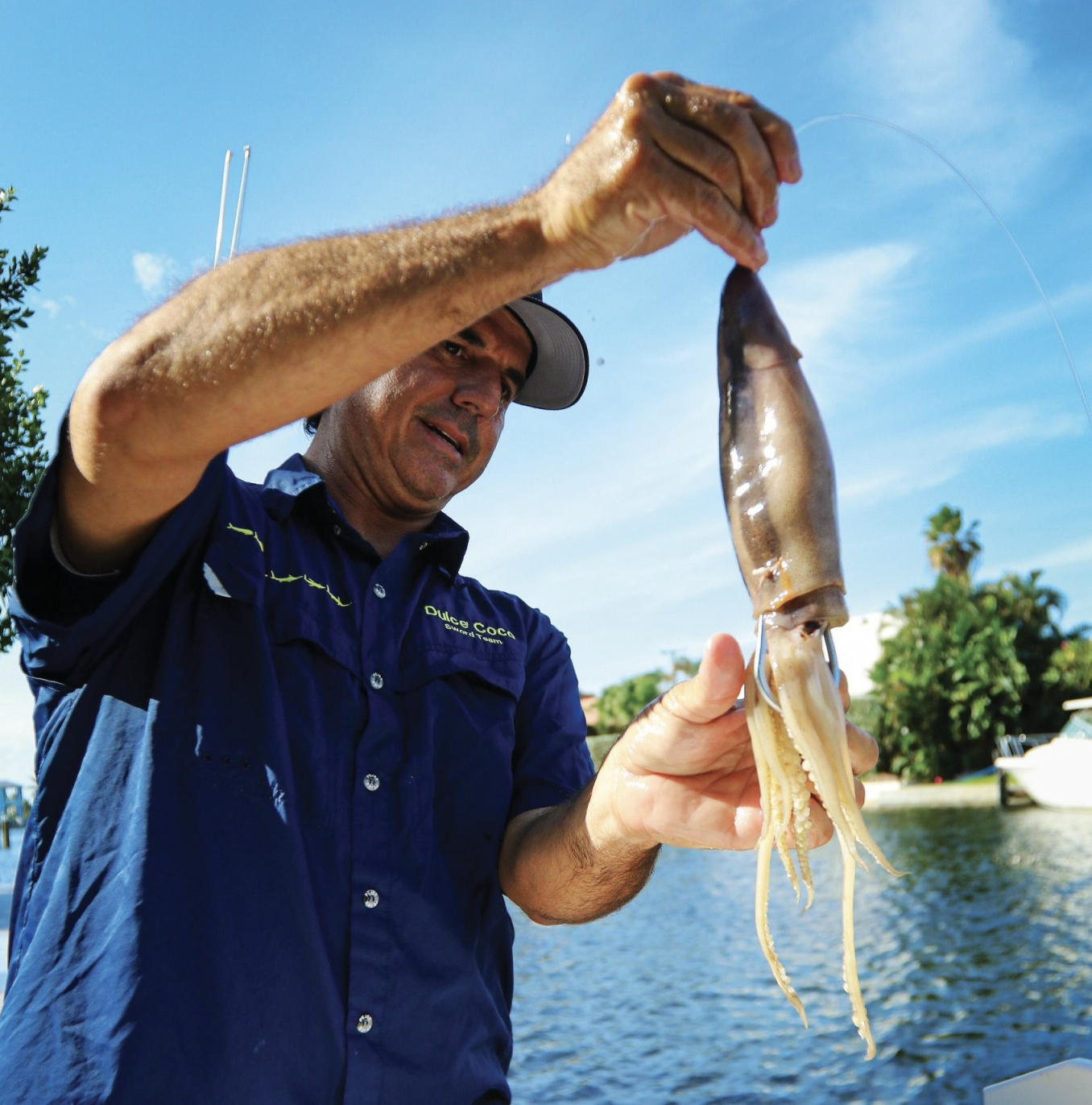Article Courtesy: inthebite.com | Originally Published: 12/17/2021 | Click here for original article
Swordfishing: Paco’s Caribbean Squid
If you’ve tried your luck daytime swordfishing, then you know exactly what it is about this crazy fishery that intrigues the imagination when pursuing a genuine sea monster more than 1,500 feet below the surface. In efforts to increase our bite to catch ratio, daytime tactics across the East Coast, Gulf of Mexico and Caribbean have evolved tremendously to suit the specific conditions encountered offshore.
Puerto Rican Captain Paco Vela spends much of his time in the Dominican Republic and was docked at Marina Casa de Campo fishing aboard Bandolera when he detailed the newest rigging tactics applied from stitched bait to weight.
Throughout a swordfish’s wide migrations and daily travels from seafloor to ocean’s surface, squid make up the largest percentage of their diet. Paco’s innovative approach to rigging natural squid eliminates the use of a plastic skirt and instead uses a a secondary squid body that has tentacles removed and insides cleaned out. “It’s important to make sure one squid is large enough to fit over the top of and cover the length of the squid that’s attached to the hook,” Paco says.
The rig starts with a 10/0 Mustad 7691 hook crimped to a six-foot length of leader. Paco slides a six-inch piece of chafe tube tight to the crimp, followed by a 10mm glow bead. The chafe tube acts as a spacer to separate the bead from the hook. “Insert the leader through the bottom of the mantle, directly centered. When the leader passes all the way through the bait the bead will act as a stopper inside the mantle allowing the hook to hang perfectly within the tentacles,” Paco says.
“Next, we need to sew the mantle to the head and tentacles. Push the body of the squid into the mantle cavity and make a pass of the needle and floss through the bait, making sure to go around both sides of the leader.” When putting all of your odds on a single bait that might take a few minutes to reach depth, you need to make sure it’s rigged properly.
“Working toward the head, I fold the mantle wings closed and then pass the needle through the bait to lock the wings and glow bead in place. I’ve recently gotten away from finishing baits with a plastic skirt. Instead, I remove the head and tentacles from a second larger squid, so I’m left with just the hollow mantle cavity. Slide the all-natural squid skirt onto the leader, again being very careful to exit through the center of the mantle. Once in position, a single stitch near the hook eye is enough to secure the bait.”
“The fishing technique that I’ve been using with this squid for the last two years, and one I’ve been teaching at our seminars, is effective no matter the speed of the current but is particularly advantageous when the current is light.” When fishing in south Florida where anglers must at times combat upward of four knots of surface current, a heavy weight is typically attached to the wind-on leader with a longline clip.
“So, you’re fishing a big belly of line and a 10- or 12-pound lead. When a fish bites it’s almost like he’s hitting a lure that’s being trolled, that’s why most of your fish are caught with the hook around their mouth or in the face. When you drop back to feed a fish the bait is really just stalling in the current, or maybe slowly falling to the bottom. This new technique allows the bait to freespool more naturally and 90 percent of the fish I’ve caught with this approach have been gut hooked.”
Instead of attaching the weight directly to the wind-on, Paco uses a kite ring that is free to slide on the leader. “I connect 50 lb. line to the top of an LP Electralume light and then a 50 lb. snap swivel. The swivel goes to the kite ring and on the bottom of the light I attach my weight.
A glow bead on the wind-on is locked in place with a rubber band to prevent the kite ring and accompanying light and weight from sliding all the way to the bait. It’s a technique that takes a bit to master because you have to pay a lot of attention to the bite. When you see that subtle tap, you want to freespool and let the fish eat. Bring the drag down to one or two pounds. If you are in complete freespool fishing with a heavy weight you won’t be able to feel what’s going on.”
“These new methods work great in the D.R. and other destinations where the current is typically slow. But I believe they will work great in Florida, too. Remember that current will work for you, not against you. While you are dropping back, the current is actually helping push the bait toward the fish, not away from the fish,” Paco says.






